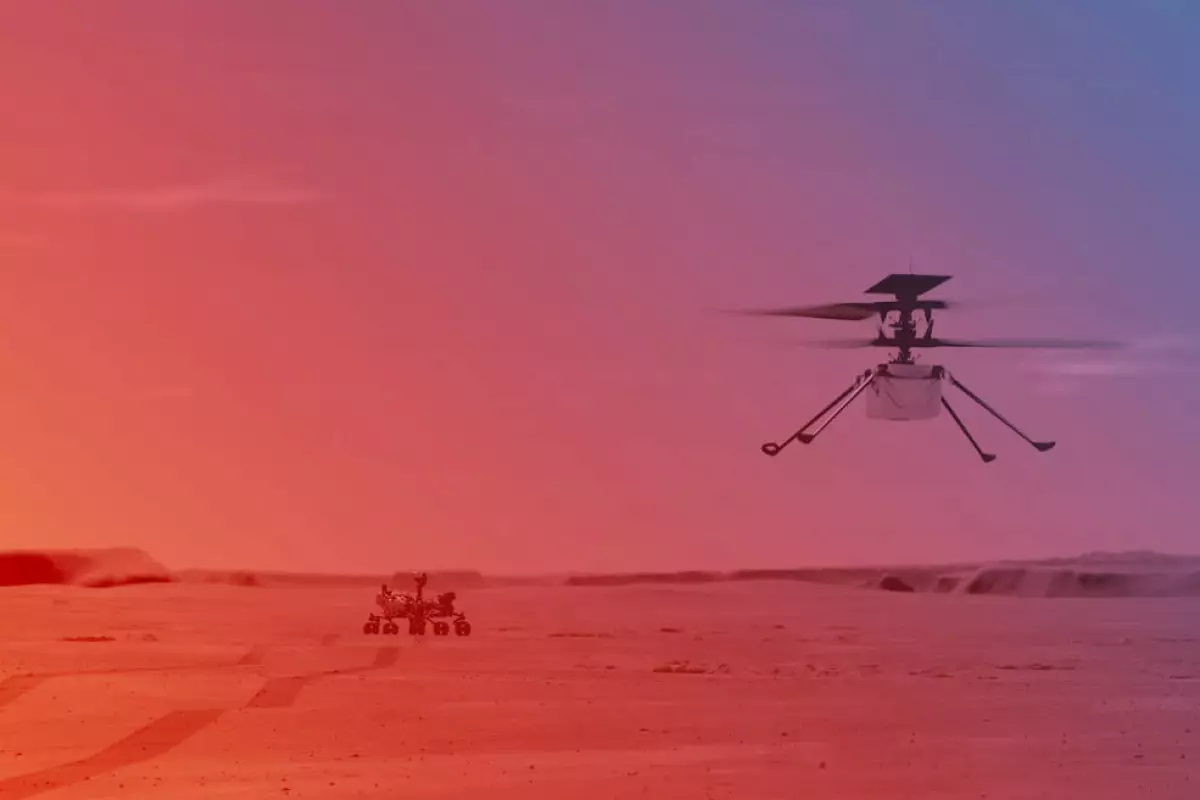NASA says it plans for its Ingenuity Mars helicopter to make its first flight on the Red Planet on April 8 or later, depending on weather conditions and preflight tests. If successful, it will be will the first powered, controlled flight on another planet.
Though it may look like the sort of little drone rotorcraft any aerospace engineering student might put together as part of a lab assignment, the Ingenuity helicopter represents a technological achievement on par with the first rover to successfully deploy on Mars.
Since it takes an average of 12 and a half minutes for a radio signal to travel from Earth to Mars, Ingenuity has to be able to fly completely independent of outside control. If that wasn't enough, Mars has only one-third the gravity of Earth and the atmosphere is only one percent as dense. The temperatures also drop to as low as -130 °F (-90 °C) at night, which can freeze electronics.

This means that the solar-powered craft has to generate enough power to keep it warm at night, which isn't easy because Mars only gets half the sunlight of Earth, and fly under conditions that no other aircraft has encountered. Though Ingenuity has been thoroughly tested on Earth in Mars-like chambers, it has still never flown in a real-world field environment. This is particularly frustrating for engineers because a small flaw that could easily be corrected in a minute with a screwdriver or a pen knife will be impossible to carry out on Mars.
The 4-lb (1.8-kg) robotic aircraft is currently strapped to the underside of the Perseverance rover as it rolls toward the site designated as the "airfield." So far, NASA has taken the first step toward flight by jettisoning the graphite composite debris shield that protected Ingenuity during landing. Once Perseverance reaches the middle of the 33-by-33-ft (10-by-10-m) airfield and it's been determined that the area is suitable for the test flights, mission control will begin the intricate process of deploying the helicopter and making the necessary preflight checks over the course of six Martian days, or sols.
These steps will include using a bolt-breaking device on the first sol to unlock Ingenuity from the SUV-sized rover, and then freeing a robotic arm on the next day so it can rotate Ingenuity out of its horizontal position as it extends two of its four landing legs. On the third sol, a small electric motor will complete rotation of the craft. This will be followed on the fourth sol by deploying the second pair of landing legs.

At this point, on sol five, Ingenuity will be suspended 5 in (13 cm) above the ground as it continues to be charged by Perserance's nuclear power source. Systems tests will continue into sol six and, if all is confirmed as operational, the helicopter will be set down and the rover will roll 16 ft (5 m) away so the helicopter's solar panels are exposed to the sun.
At this point, a 30-sol (31-day) onboard mission clock will start. During this time, mission control will continue tests, which will include a non-flight power up of the rotors to 2,537 rpm. The helicopter will then carry out its test flights on its own after receiving final instructions from Earth as it stores telemetry data for later relay to Earth through Perseverance. Once airborne for the first time, it will climb at 3 ft (1 m) per second and hover at 10 ft (3 m) for up to 30 seconds before landing.
"When NASA’s Sojourner rover landed on Mars in 1997, it proved that roving the Red Planet was possible and completely redefined our approach to how we explore Mars," says Lori Glaze, director of the Planetary Science Division at NASA Headquarters. "Similarly, we want to learn about the potential Ingenuity has for the future of science research. Aptly named, Ingenuity is a technology demonstration that aims to be the first powered flight on another world and, if successful, could further expand our horizons and broaden the scope of what is possible with Mars exploration."
Source: NASA








